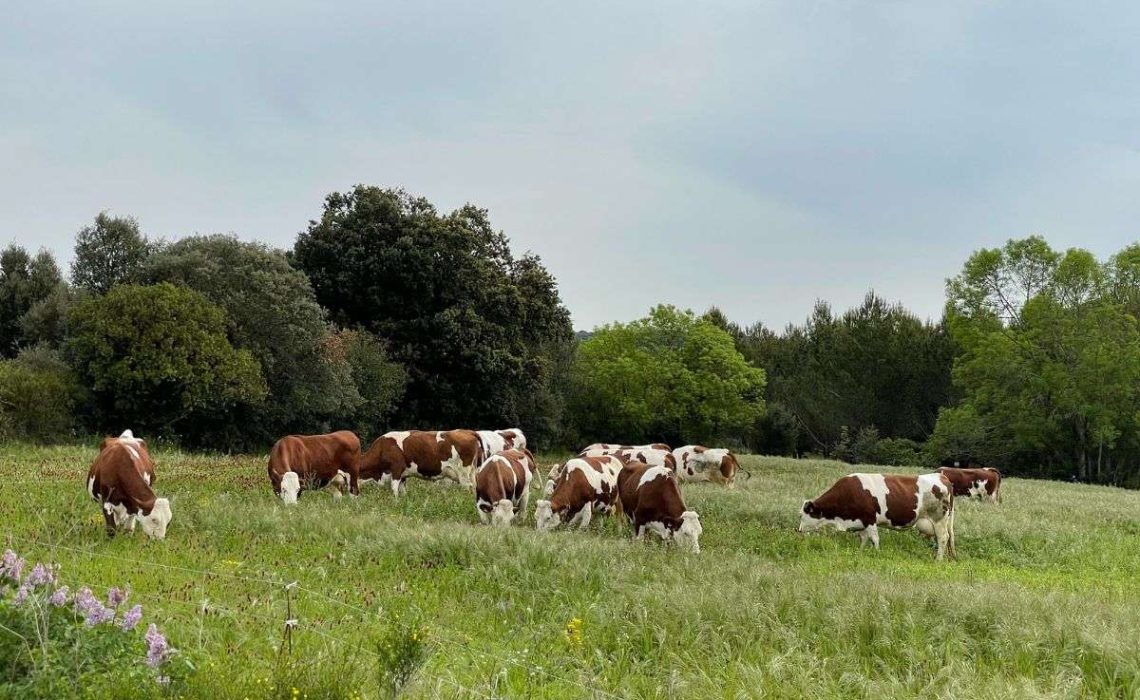Animal agriculture can be a polarizing topic for several reasons. Some concerns about traditional animal farming are its effect on the climate and the welfare of the animals.
In response, small farms and even some larger commercial farms are moving toward regenerative animal agriculture practices to reduce emissions and improve their soil—while treating their animals well.
Healing the soil with cows
In cattle farming, regenerative agriculture often looks like moving or rotating the area where herds graze. The animals eat the grass and their waste fertilizes and adds nutrients to the soil. Strategic grazing can also help push trampled grass into the soil for better integration and decomposition.
- Regenerative animal agriculture is the methods and practices that focus on restoring soil health and biodiversity while raising animals.
Alexandre Family Farm: exploring a new standard
Civil Eats wrote an in-depth article on the California-based Alexandre Family Farm, which has become a successful model for regenerative animal agriculture: It’s the first certified regenerative dairy in the United States. Stephanie and Blake Alexandre, the farm’s fourth-generation dairy operators, recognized the need for change and adopted alternative methods in animal farming.
They prioritized improving soil organic matter, employing rotational grazing and composting strategies.
- These efforts have resulted in improvements, such as soil that ranges from 8 to 15 percent organic matter (up from 2 to 3 percent thirty years ago), better water retention for less irrigation, and increased forage quantity and quality.
While smaller dairies have been practicing regenerative agriculture for years, Alexandre Family Farm proves that large-scale operations can adopt these practices, too. Other dairies, such as Maple Hill Creamery, Dharma Lea Farm, and Stonewall Farm, also embrace regenerative practices.
Moving toward sustainability
By prioritizing land restoration, farmers can create a more sustainable and resilient future. Despite its challenges, the adoption of regenerative animal agriculture holds immense potential for the industry and the environment.

